So, you’re looking to add a Japanese maple to your garden, or to add another one or two to your budding collection. There are many fine choices in the garden centers, and many dozens more available through mail order nurseries if you’e willing to start with a little guy. There are hundreds of named cultivars, and more introduced each year. Most are worthy plants, but if you’re limited to fifteen or twenty that will fit in your garden, or only one or two, which should you select?
The selection process for my garden was more haphazard than planned. An interesting Japanese maple would arrive in the garden centers, and spur of the moment I’d just have to have it. I’ve purchased two Lion’s Head maples (Acer palmatum ‘Shishigashira’, above) five years apart, both on impulse. The first was a little fellow, barely taller than two feet, and scrawny with only a few branches with leaves tightly bunched at the tips so that it was practically unsellable, except to me. It has slowly grown into a shrubby, eight foot tall tree. The second was a tree damaged in transit across country from an Oregon maple grower, and though a few branches were broken it has grown to match the older tree.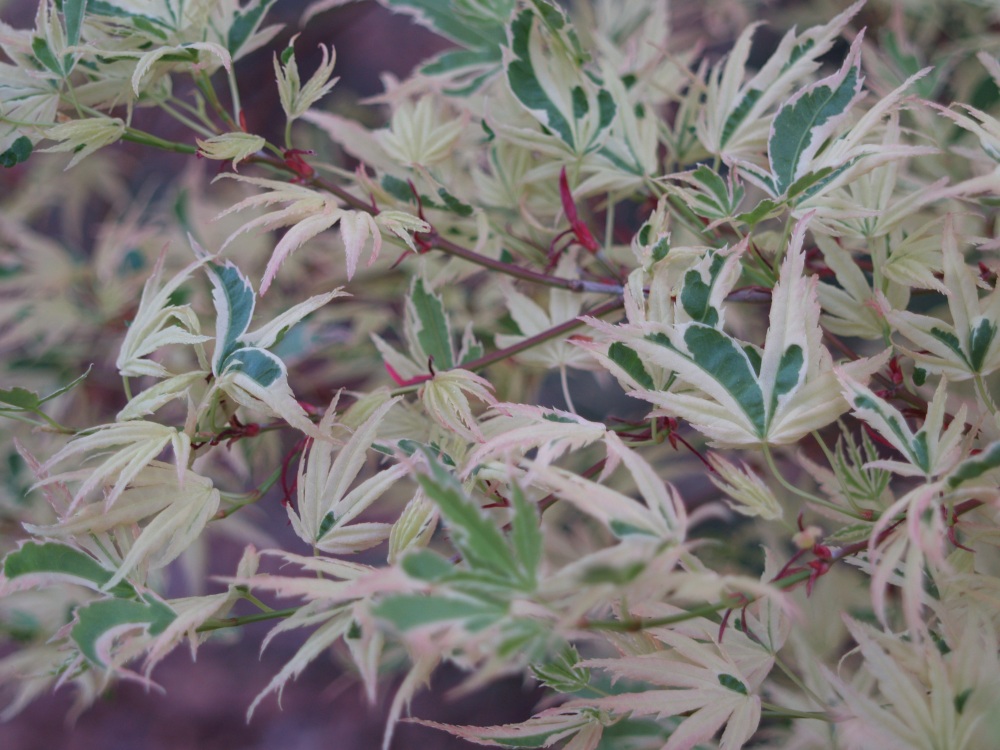
I have no reservations about purchasing damaged trees, so long as the injury is cosmetic and the price is right. I have visited Japanese maple nurseries in Oregon for thirty years, and had seen a Golden Full Moon maple (Acer shirasawanum aureum, below) only a few times, and the slow growing trees were far out of my price range. Several years ago I recognized one in a field of one and two-of-a-kinds that had been left behind because they were missing a branch or had suffered damage from rabbits or mowers. Most of the trees in the this field would later be uprooted and discarded, but I saw that the injury to the trunk would eventually heal over, so the next spring it was delivered and planted in my garden. The deep scar has not yet fully healed, but the tree is otherwise healthy and growing vigorously.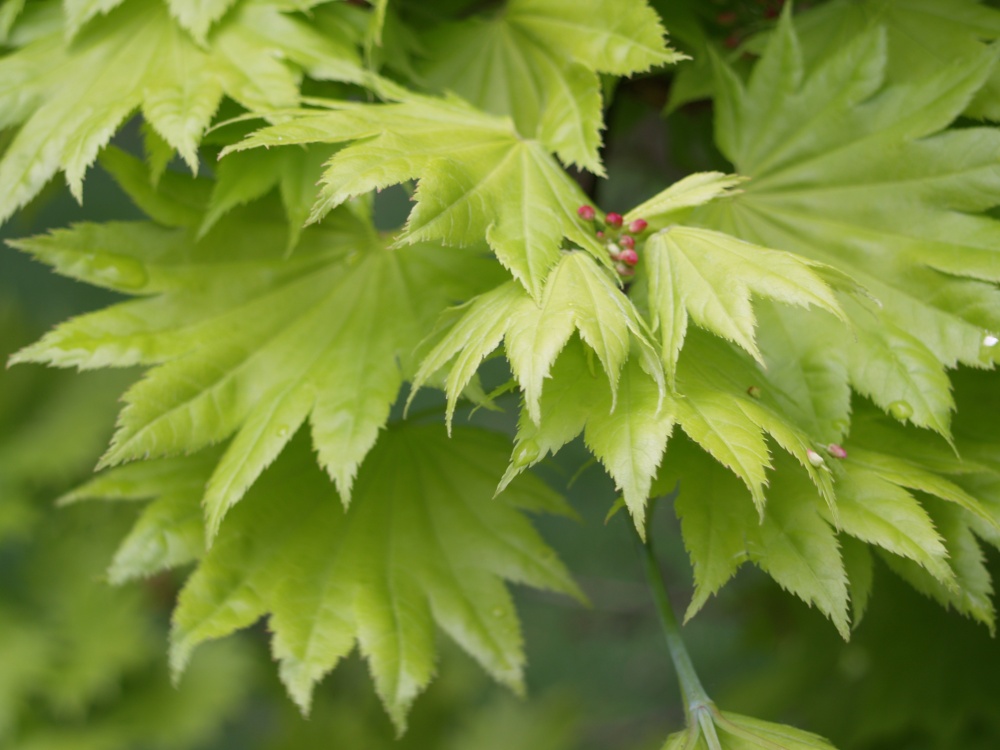
To assist you in selecting the appropriate tree for your garden we’ll start by breaking the Japanese maples in my garden into two basic catergories, weeping and upright growers. There are further distinctions that can divide them into smaller groups such as color (red, green, yellow, and variegated) and leaf shape (palmate or dissectum), but the more important consideration for most people is the growth habit. If you care to study Japanese maples in greater detail there is no better reference than Japanese Maples by J. D. Vertrees.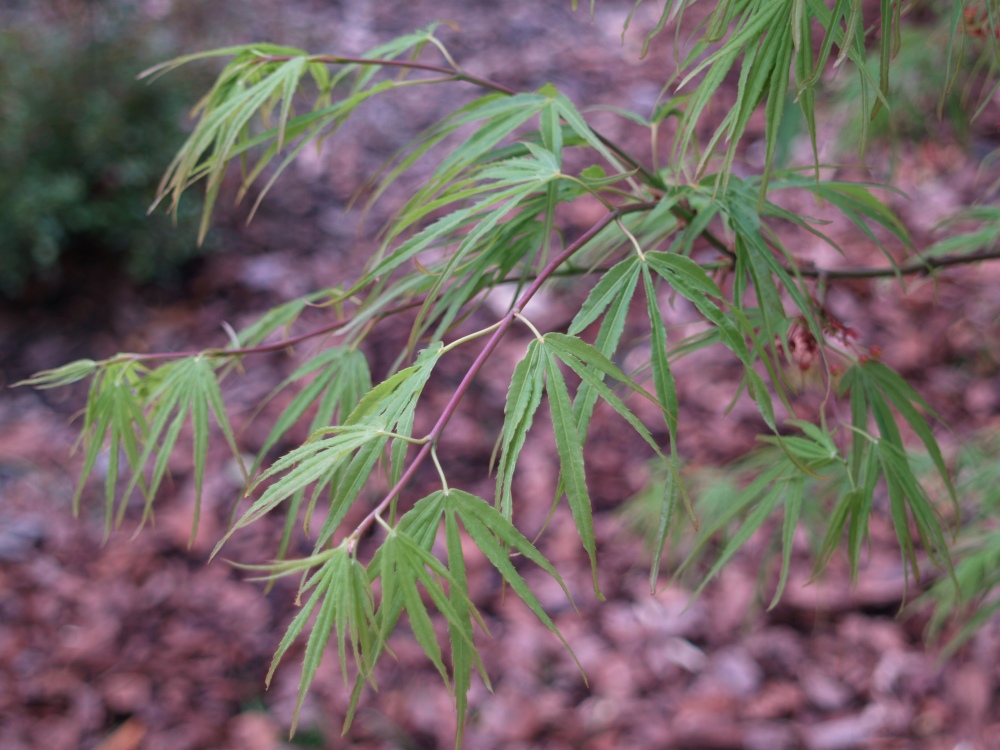
Weeping Japanese maples –
Weeping maples are those with pendulous branching, and most will have finely dissected leaves in contrast to the broader palmate foliage of most upright growers. Weeping varieties will generally grow shorter than upright types, though this can be deceiving because branches often cascade to the ground and the amount of real estate they cover can be far greater than much taller trees. I have planted an upright ‘Bloodgood’ maple within five feet of a walkway, and its branching doesn’t create a conflict at all. A weeping ‘Crimson Queen’ was planted the same distance from the walk, and after ten years it was clear as it grew in width that either the walk or the maple must be moved.
There are numerous weeping cultivars, and many are indistinguishable from one another. There are different leaf forms and color, more open or compact branching, and some are faster growing than others. I have two red leafed, weeping dissectum maples in my garden, ‘Crimson Queen’ and ‘Tamukeyama’ (above), and a green leaf dissectum ‘Viridis’ (A. palmatum dissectum’Viridis’ ), which is sort of a catch all for most green leafed weeping cultivars. In my garden there are many more upright types than weepers because there is more diversity, but if you are looking to plant a weeping Japanese maple you can not go wrong with these common varieties.
Upright Japanese maples –
Most upright growing Japanese maples have palmate leaves that are not dissected as finely as weeping types, though I referred in the first chapter to the two ‘Seriyu’ maples planted at the front of my house that are twenty feet tall and wide with green, dissected leaves. While foliage is not as delicate on cultivars with palmate leaves, there are a variety of leaf shapes and forms that make each unique, and I have planted eighteen upright Japanese maples in an array of colors and leaf shapes.
There are a number of red leafed, upright Japanese maples that are not dramatically different than the common ‘Bloodgood’, though all are fine trees. ‘Bloodgood’ holds its red color longer into the summer’s heat, but Trompenburg (above) and Burgundy Lace are beautiful maples with more open branching, and well worth growing. I also grow two maples that are witch’s brooms of ‘Bloodgood’. ‘Skeeter’s Broom’ and ‘Shaina’ (below) are very compact, bush-like forms of ‘Bloodgood’, grown from mutations in branching that form broom-like, dense branching. When rooted from cuttings, or when grafted the broom-like form is retained so that an upright growing maple is suitable for small properties.
I have just planted another compact growing maple, but ‘Shirazz’ (A. palmatum ‘Gwen’s Rose Delight’, below) has a narrow border of cream surrounding its ‘Bloodgood’ red leaves. The variegation fades in late spring, but the color stands out through the spring. There are two other maples with variegated foliage in the garden, the slow growing ‘Butterfly’, and the more vigorous ‘Orido Nishiki’ (both scattered about this page). Both have leaves with combined colors of green, cream, and pink, and one leaf is rarely colored the same as another.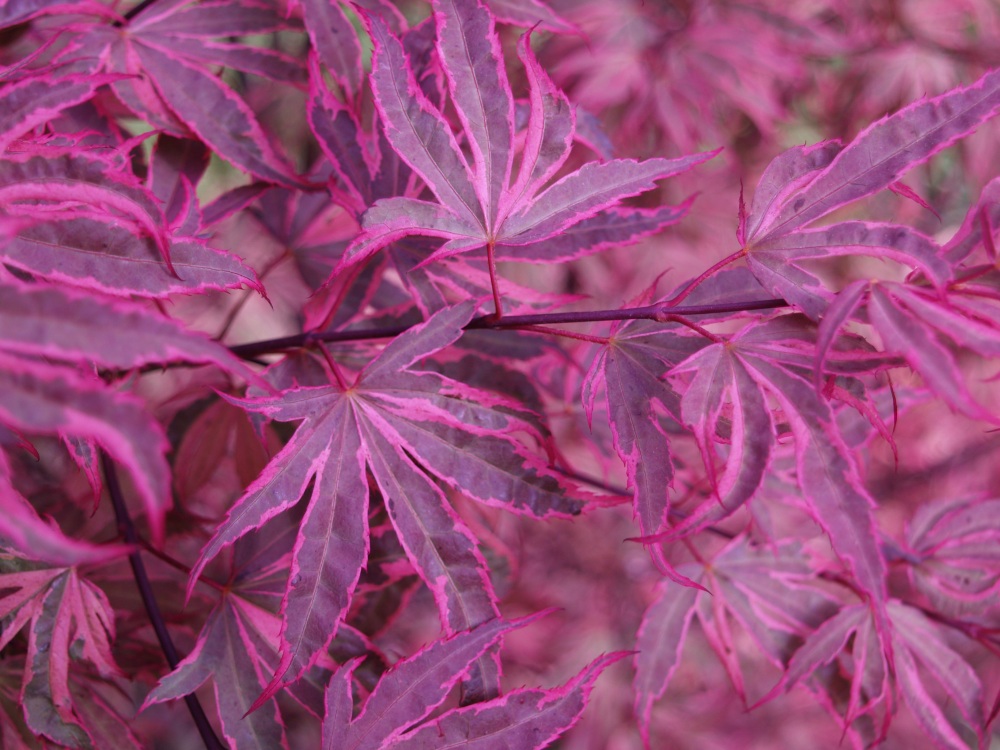
Beyond ‘Seriyu’ there are other green leafed maples that are quite interesting because of the unique shape of their leaves, or with the brilliant red bark of ‘Sangu Kaku’ (below) that is most prominent in the winter after leaves have dropped. ‘Lion’s Head’ maple (A. palmatum ‘Shishigashira’) is an odd sort with crinkled leaves, and is sometimes called ‘Parsley leafed’ maple. It’s autumn foliage color is outstanding, as is ‘Okushimo’ maple, with leaves that curve upward. ‘Lion’s Head’ maple is slow, and shrub-like, while ‘Okushimo’ is taller and strictly vase shaped, unlike most maples that are more umbrella-shaped.
There are two Japanese maples in the garden with deeply dissected, threadlike leaves. Atrolineare (A. palmatum linearilobum ‘Atrolineare’, below) has narrow red leaves, and an open growing habit so that it barely shows up in a densely planted garden. Until you walk upon it, that is, and you are delighted by the lacy foliage. ‘Scolopendrifolium’ has green leaves that are slightly wider than those of ‘Atrolineare’, and the branching is more compact and vigorous.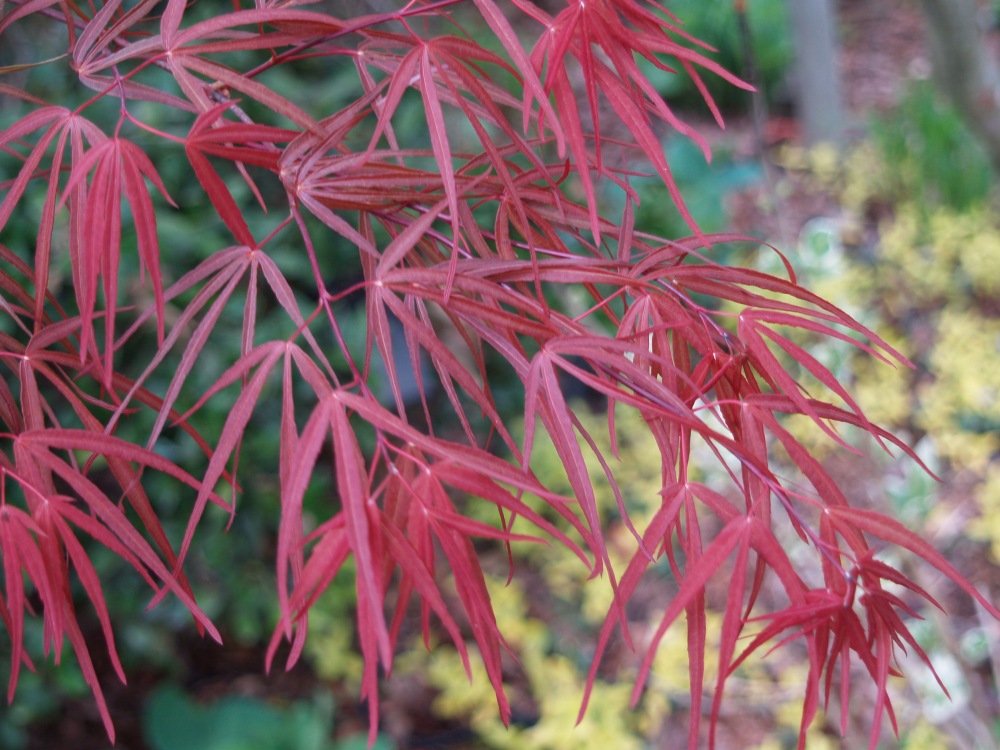
The last two Japanese maples on this tour are not Acer palmatum cultivars. ‘Fern Leaf’ maple (Acer japonicum aconitifolium, below) is a broadly spreading, upright growing maple with large, finely dissected leaves, and with stunning autumn foliage color (my favorite in the autumn garden). This is another maple that I’ve grown from nearly a seedling, and it is one that I treasure. The other non-palmatum cultivar is the Golden Full Moon maple (A. shirasawanum aureum) referred to in the previous chapter. Newly emerging leaves are a bright yellow, and they fade only slightly in the summer heat. I have given this maple a bit of protection from the afternoon sun, so that its foliage does not burn and fade, and though I waited for years to plant this maple, my patience was richly rewarded.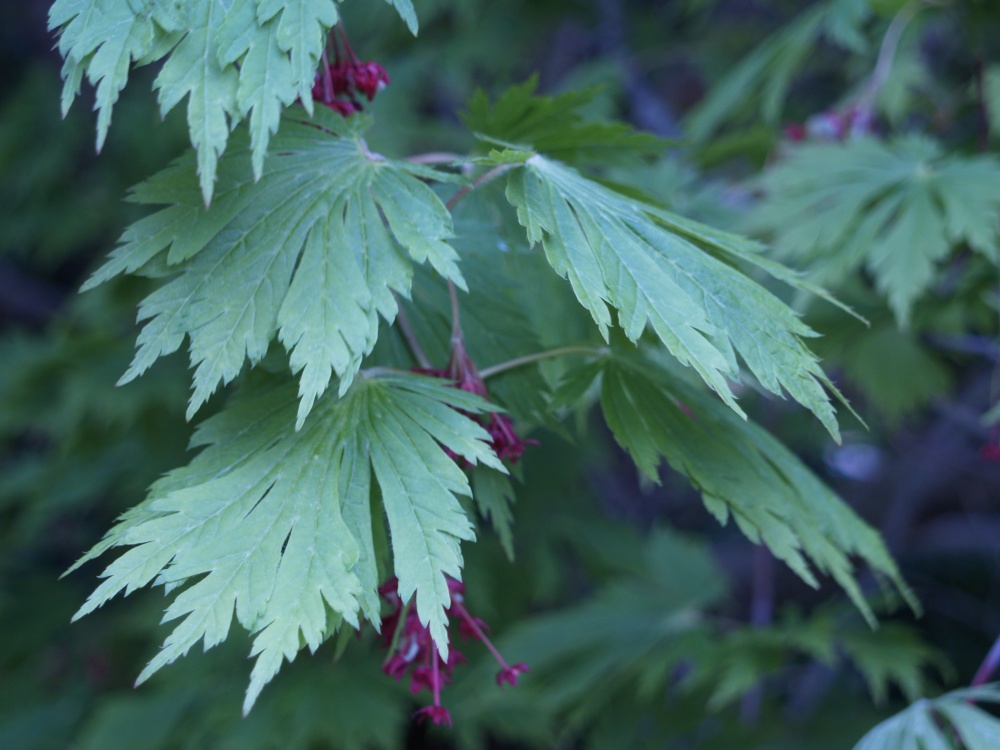
Perhaps you have found a Japanese maple of interest here, and even with too brief a description you have settled on a choice or two. But, are you planting it in the right place? In the right soil, and sun exposure? My first concern is that the maple be given adequate space, since we want to avoid having to prune (butcher) the maple as it grows too large. I have planted too many plants in my garden too close, but the Japanese maples have been given more room to spread.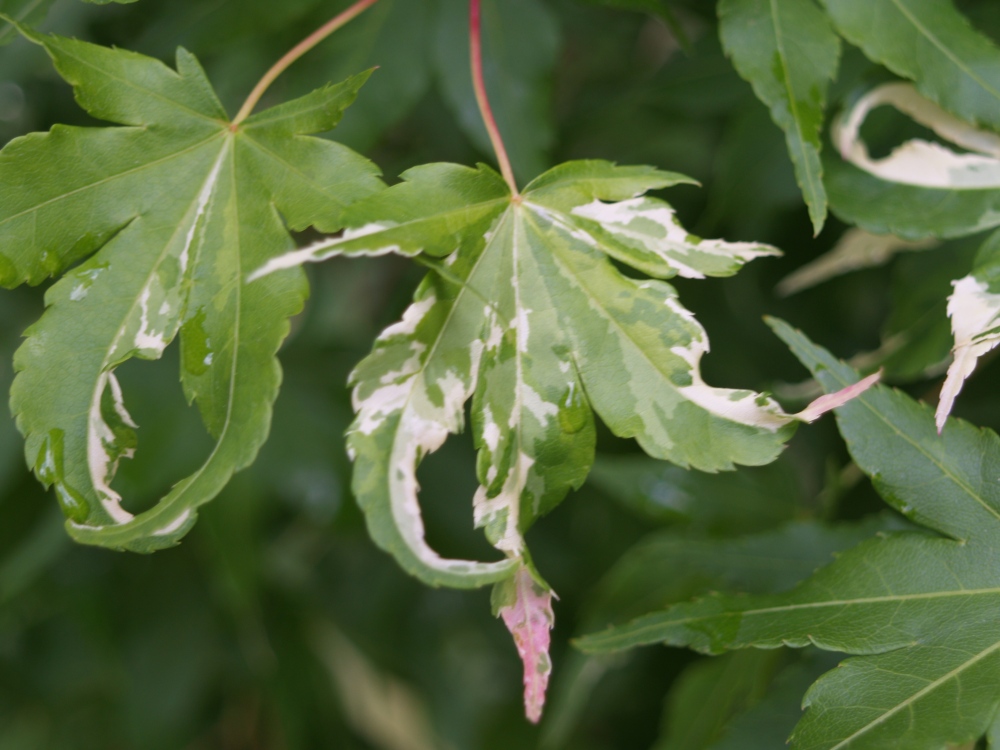
My second consideration is that the Japanese maple will perform better if planted in sun to part sun. In areas of the southeast with long, hot summers, maples will perform better with a bit of shade, in particular from the afternoon sun, but the best foliage color and growth results from more sun. Like most plants Japanese maples grow best in deep, moist, well drained soils, but since this is in short supply in most gardens, maples are quite content to grow in just about any soil so long as it is not constantly wet.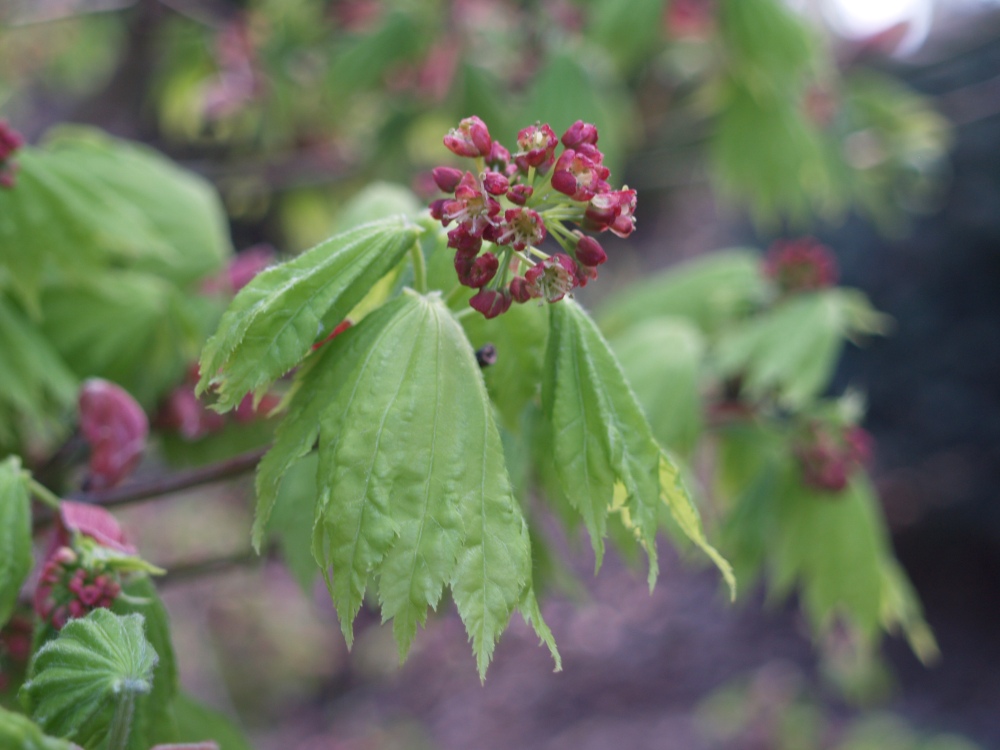
Many of the Japanese maples in our gardens originate in Oregon, and indeed the mild winters, cool summer nights, and low humidity are ideal for their growth. But, I have found that Japanese maples grow nearly as quickly in my hot, humid, mid-Atlantic garden as in Oregon, and only in the far southern states are temperatures inhospitable. For most parts of this country there is little reason for a garden not to have a Japanese maple, or twenty-one.
Please forgive my droning on and on. I’ve attempt to be brief, but it’s not the nature of the beast. In a few days I’ll return with photos of shrubs and perennials that have been blooming in this second half of April.
can i plant a japanese maple i n a patio planter?
Japanese maples work quite well in large planters. They are sufficiently cold hardy and drought tolerant so that they are more forgiving than many other plants. However, eventually the tree will grow too large for almost any container so it will need to be transplanted to a large container or into the ground.
Years ago my father started a Japanese garden in the front yard he had several JMs and statues. I bought him a Shishigashira for his birthday. For some reason the green lace leaf and blood red didn’t do well but the Shish. thrived. My dad passed away in 2001 and I now live in house. I LOVE this tree. Not only because he did but it is sooo beautiful. The autumn color is stunning and I love the tight cluster of leaves.